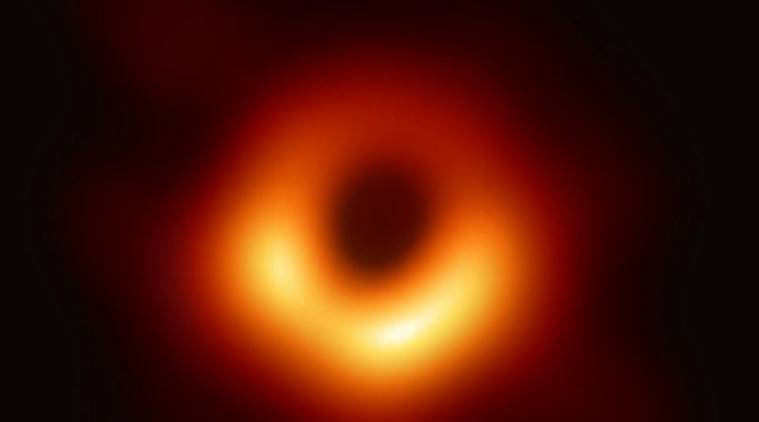
But the universe is a big place, where improbable things happen all the time. The paper’s authors note that the runaway black hole scenario requires the confluence of seemingly unlikely events. The hypothesis is in the Astrophysical Journal Letters. Where it wandered, among a cluster of galaxies, before settling into a new home in NGC 1277. Some astronomers have been labeling all black holes weighing more than ten billion solar masses ultramassive black holes (reserving the more famous supermassive black hole term for black holes weighin. The recoil from that violent event could have flung the ultramassive black hole into space. Answer (1 of 6): Solet it be known that I really don’t like the term ultramassive black hole. It has been estimated that there could be 12 rogue black holes in the. 2 They are caused by collisions between two galaxies or when the merging of two black holes is disrupted. strong cool core clusters must be ultramassive with MBH>1010Msun. A rogue black hole (also termed a free-floating, interstellar, nomad, orphan, unbound or wandering black hole) is an interstellar object without a host galactic group.

Say the black hole formed from the merger of two smaller black holes in a larger galaxy nearby. galaxies (BCGs) sit on the fundamental plane of black hole (BH) activity. One idea-albeit a speculative one-is that the black hole actually came from a different galaxy. Most likely supermassive and ultra-massive black holes formed from massive gravitational collapse of immense dust clouds in the early phase of the universe. The black hole weighs 40 billion times the mass of our sun. Ultramassive black holes in the most massive galaxies: MBH versus. Astronomers have now spotted a record-breaking heavyweight black hole at the center of a galaxy known as Holm 15A. The discovery got researchers wondering how the mismatch came about. This is an ordered list of the most massive black holes so far discovered (and probable. From inspiraling neutron stars to ultramassive black holes, the signals that we should expect the Universe to generate ought to span more than 9 orders of magnitude in frequency. This makes it one of the most massive black holes ever discovered, more than six times the value of the black hole of Messier 87, which for 60 years was the largest known black hole, and was dubbed an 'ultramassive' black hole. Its black hole is some 17 billion times the mass of the sun.īy typical standards, such a black hole is about 100 times too massive for that galaxy. The one at the center of our galaxy is about four million times the mass of the sun.īut that’s puny compared with the whopper that researchers discovered last year in an otherwise unremarkable galaxy called NGC 1277. Ton 618, the largest ultramassive black hole, appears at the very end of the video, which, at 66 billion times the mass of the Sun, is going to weigh very heavily on how we daydream about the cosmos moving forward.Black holes tend to be pretty massive. They can fit multiple solar systems inside of them. These physical manifestations of the word gigantic are billions of times the mass of the Sun.


As “perhaps the largest single bodies that will ever exist,” ultramassive black holes put all other black holes to shame. Answer (1 of 2): How near is near Considering it has an event horizon some 40+ times the size of Neptune’s orbit, if it appeared anywhere within the Solar System, we’d already be inside the event horizon and, within a very short period of time we’d be drawn into the singularity.

The supermassive black hole at the center of the Milky Way Galaxy, Sagittarius A*, is one such monster, even though it only has a radius 17 times larger than the Sun’s.Īfter the supermassive black holes, the video culminates with a look at ultramassive black holes. An enormous black hole located in the center of the galaxy cluster RX J1532.9+3021 (RX J1532 for short) is one of the most powerful black holes in the known Universe, according to a team of. These seem downright gargantuan until the video continues to black holes that are millions of times more massive than the Sun. But, as the channel’s narrator notes, that black hole is only 17.2 kilometers-or roughly 10 miles-wide.įrom there, the comparison bounds up to black holes that have hundreds of times the mass of the Sun. The comparison then ascends up through black holes around the size of the one that keeps V723 Mon, a star 24 times the mass of the Sun, in orbit. These galaxies are as far away as 3.5 billion light years from Earth, and the results reveal that the ultramassive black holes are growing faster than the stars in their respective galaxies. The lineup of the (usual) gravitational suspects begins with black holes that are only the size of protons yet still have the same mass as a big mountain. NASA’s Chandra X-ray telescope helped find a group of ultramassive black holes destroying their host galaxies.


 0 kommentar(er)
0 kommentar(er)
